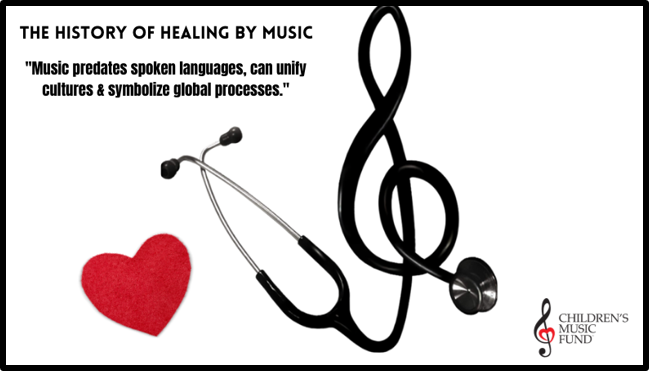
May 25, 2020 | Blogs and News
By Scott B. — Summary of Research Paper — 3 min read —
Music is considered to be “the universal language of mankind.” Due to today’s carbon-dating technology and archaeological finds, intellectually composed music and the origin of advanced instruments have been traced back to as early as 4000 BC. It is suggested that primitive forms of music were mainly composed of percussion-based instrumentation used to replicate animals or used in religious practices.
Music predates spoken languages, can unify cultures, and symbolize global processes – what other ways can music affect our daily lives? In 2013, Dr. Babikian, Dr. Zelter, and Dr. Tachdjian, our founder and president, explored music, its history, and its role in influencing the medical field in the study, ““Alternative and Complementary Therapies”.
The medical field aims to heal the whole individual. Often listed as a vague statement of medical schools, many are left wondering what this actually means. Most professionals will tell you that this definition includes an individual’s physical, mental, emotional, and spiritual needs. In the last century, modern medicine has developed to include advanced technologies and alternative remedies including the use of music as an alternative to other modern management practices.
Now, this is not to say that your cell phone ringtone will manage pain or treat illnesses. The role of music in medicine has historical context and underpinnings that allow it to aid in addition to other therapies. For this discussion, we will split these findings into core areas: historical context, developmental context and the importance of continuing research.
Historical Perspectives of Music
The first thing that these physicians examine in their research paper are the historical perspectives of music and its remedies of illness. The article emphasizes that music is associated with communication, emotional expression, and healing. It references Biblical scripture to heal an individual spiritually, and takes a deeper look at the parallels between the development of major literary movements and their musical counterparts — Greco-Roman, Arab, Indian subcontinent, and Chinese tradition. However, in many of these movements, Music Therapy is confined to emotional expression. “. . . music therapy works by attuning the soul to the cosmos. . .” (Tachdjian et al 2013).
The article then discusses the change from this ideology to one of an active and respected alternative. In early Islam, music became a treatment option for the clinically “insane.” While in India and China, music was thought to affect natural elements, but not necessarily disease. In Europe, we see references of music having power of nature and the ability to heal affairs of an emotional state (i.e. the broken heart). Music and dance were used ritualistically to heal injuries, produce crops, and ensure general health and wellness. Finally, we see the power of healing that music has in war. While music has been used for communication, emotional expression, and helps heal the whole individual, it is relatively under researched in the medical community.
Importance of Studying Music and Its Role in Medicine
In addition to the historical context behind musical healing, preliminary research has shown that music does in fact help build genuine connections. Music serves as a building block in a human’s development and is an innate ability that is hardwired into our brains. As the article references, newborns have the ability to discriminate and show interests in songs.
Another study found that music affects the growth rate of in vitro human cancer cells depending on the type of music. Countless studies show the importance of music education in primary education and statistics correlate that children exposed to music in their formative years are less likely to abuse drugs and alcohol; and are more likely to graduate from college.
One of the final things that this article looks at are patterns that the brain exhibits when exposed to music. Due to functional magnetic resonance imaging, electron tomography and electroencephalography, scientists have been able to study music in the same rigor given to other clinical practices.
From these studies, we see that the regions of the brain that are responsible for euphoria are very similar to the regions of the brain that perceive and process musical experiences. Neuroscience research has focused on the auditory cortex and the somatosensory cortex. Other studies found that listening to music activates more regions than any other known cerebral activity. By looking at these studies, it is evident that there is a scientific basis for studying music and its ability to contribute to the healing of the whole individual.
Music Therapy Research Continues
The low cost and minimal adverse effects while being an individualistic and empowering therapy, allows Music Therapy to be a viable option for a variety of illnesses and treatments. Organizations, like Children’s Music Fund, are vital in continuing to research the healing benefits of Music Therapy. It is crucial to provide this patient interaction for children battling difficult medical conditions.
In addition to providing fully-fund music therapy sessions and gifting instruments to sick children, research is the third pillar of our mission. Read more about us here.
Follow us on social media, @thecmforg, and joins our One Heart Fan Club. Together, we can help heal children through the power of music.
